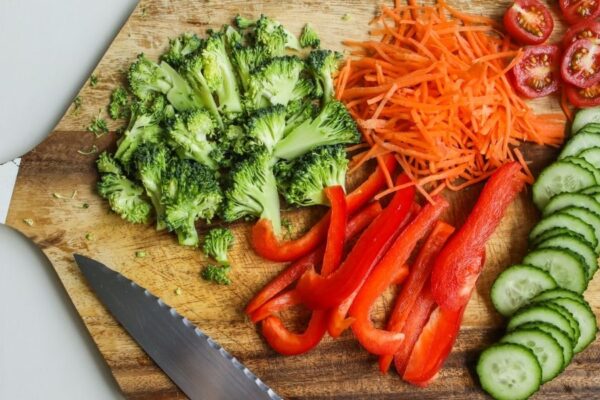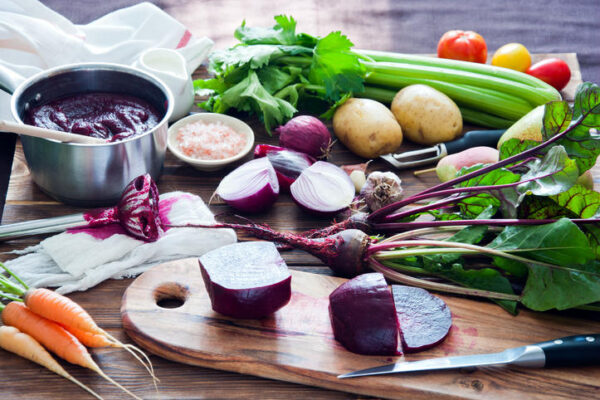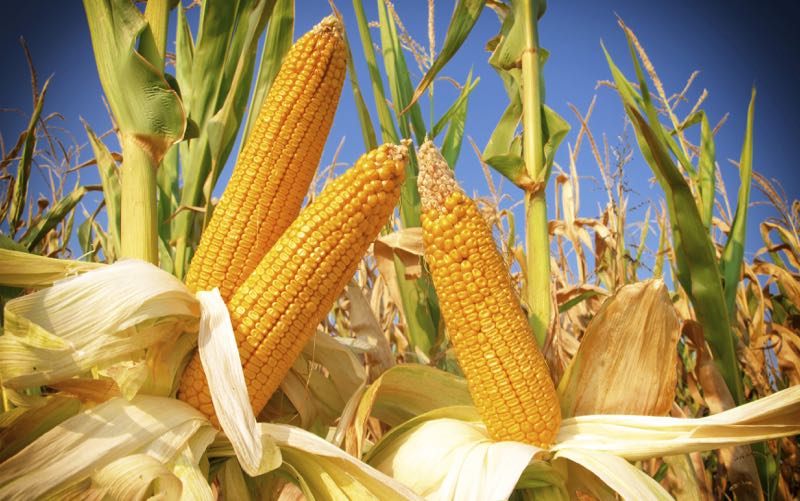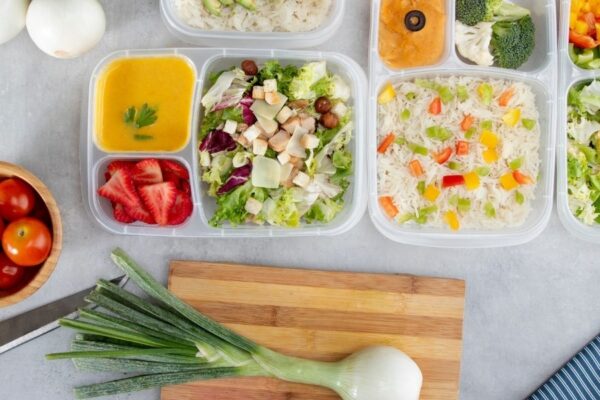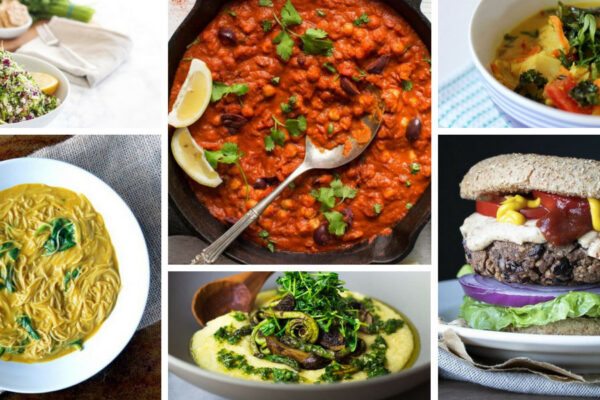Air Fryers: Are They Healthy?
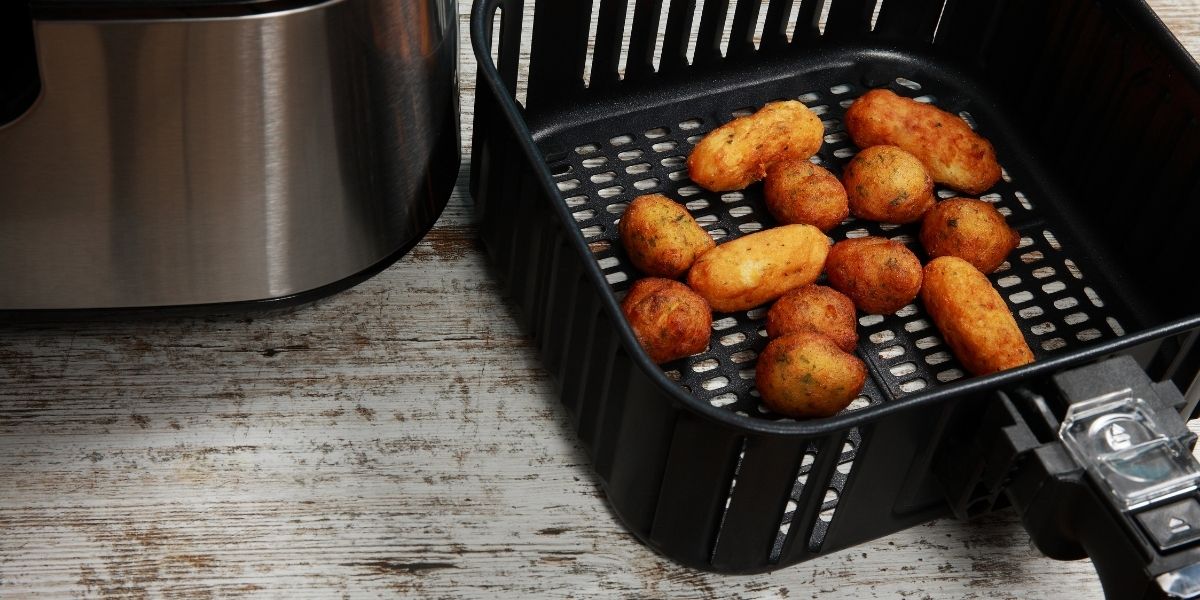
We firmly believe that you don’t need scads of gadgets and gizmos to prepare nutritious meals – basic kitchen tools like a knife and a pot will yield a delicious dinner. Our philosophy is first and foremost to use what you have and save the budget for getting the best quality ingredients you can. We aim for minimalism when it comes to kitchen gear and don’t jump on the bandwagon of single application gadgets or appliances. In recent years, we have received a number of questions from Culinary Nutrition Expert Program students and alumni about air fryers, and whether or not an air fryer is something we’d recommend using. What’s the deal with air fryers and is air-frying a healthy choice?
What is an air fryer?
An air fryer is an appliance that replicates the texture of fried foods without the actual immersive deep frying in a pot of oil. It’s essentially a mini convection oven. Hot air circulates around the food and because the device is small, it allows for crisp and crunchy exteriors on whatever you are ‘frying’. You also only need to use a small amount of oil to achieve a ‘fried’ texture.
There are a few types of air fryers you’ll see on the market:
- Basket Fryer: This is typically plastic, and has a basket you slide in and out easily for tossing and flipping ingredients.
- Convection Fryer: This is usually a multi-use appliance that has different settings – air frying, baking, roasting, toasting, etc. The multiple cooking functions are handy for those who don’t love single-use appliances, but also want to enjoy air-frying.
- Fryer Attachment: The Instant Pot has a special air fryer attachment, too.
Benefits Of An Air Fryer
The main draw of air fryers is they allow you to enjoy foods that are typically deep-fried without the deep frying. The high temperatures in which foods are deep-fried can cause the oil to go rancid and create a harmful compound called acrylamide, which may lead to cancer and may affect reproduction and the nervous system. Fried foods are also often cooked in oils that contain trans fats, which contribute to free radical damage in the body. You can read more about how to choose oils for cooking here.
Is the Air Fryer Healthier?
People also enjoy air fryers because they perceive the foods as healthier and that they may be lower in calories from fat than their regular fried counterparts. But calories don’t tell the whole nutrition story, and fat doesn’t have to be a terrible nutrient – its form and the temperature you cook it at does matter, though.
Some air fryer benefits are:
Energy Efficiency
The air fryer is a small countertop appliance and uses less electricity than a medium or large-sized oven. From a food prep standpoint, we can offer air fryers points for heating up more quickly than your oven.
You Don’t Heat Up Your Kitchen
If it’s a hot day or you live in a perpetually warm or humid climate, this appliance won’t heat up your entire kitchen. More ideas on what to make when it’s too hot to actually cook here!
Easy to Clean
Many of the air fryer components, like the basket, are easy to clean and dishwasher safe. And, as it’s small, air fryers are simpler to clean than a large, gunky oven.
Drawbacks of Air Fryers
We are not huge fans of air fryers. While it’s nice to have a fried food simulation, there are different cooking methods you can use to create crispness without having to purchase an additional appliance.
Some things to consider about air frying and air fryers include:
Plastics
Many air fryers are mostly made of plastic, with a metal basket inside. Plastics contain chemicals that disrupt our endocrine system (and plastics are destroying the environment, too). When we cook food in plastic, those chemicals leach into our food. While some use plastic that is free of bisphenol A (BPA), one of the main hormone-disrupting chemicals in plastic, unfortunately, evidence is emerging that the BPA-free alternatives are just as damaging.
Type of Fat/Oil Used
The marketing appeal of the air fryer is that you can use less oil to cook low-fat items, but as we know the beneficial type of non-oxidized fats in an optimal quantity are good for us. Instead of encouraging the use of nutritious sources of fats, many air fryer recipes call for aerosol non-stick cooking sprays, which include propellants such as propane and butane which can be damaging to our health, plus their flammability may cause burns and injuries. Many cooking oils are not high-quality and can contain trans fats and GMOs, too.
Cost
This appliance isn’t cheap, especially if you bought one when they first came on the market. As air fryers have become popular, more options are now available at different price points but you’ll still be paying around $100 for the least expensive models. Pricier versions can be anywhere from $200-$300 and above.
Size
An air fryer is often bigger than an Instant Pot or slow cooker and takes up a chunk of counter space, leading to overcrowding and overall counter clutter. And if you don’t have large cupboards, it can be difficult to store it away.
Serving Sizes + Inefficiency
Even though the air fryer itself is larger, the basket inside is quite small so you can really only cook something that makes 1-2 servings. The crispy, fried effect occurs when air can circulate throughout – if you overcrowd you’ll end up steaming food rather than air frying it. Unless you want to spend half your evening making multiple batches of fries or chicken nuggets, the air fryer doesn’t make sense for families or batch cooking.
Also, since the appeal of air frying is the crispiness, it tastes better when foods are served immediately. Air fried foods aren’t the type of meals you can make in advance to help you get dinner on the table quickly.
Single-Use Appliance
While air fryer manufacturers claim you can use their product to bake a batch of cookies or cook eggs, realistically most people aren’t going to use them that way – especially the basket air fryers. The appeal of air fryers is the crispy food and there is a limited category of recipes people will make in them, compared to other appliances that offer more versatility. We like to teach our students how to maximize efficiency in the kitchen and opt for appliances that they can use regularly for a variety of dishes.
How to Choose The Best Air Fryer
If you decide to purchase one, we’d recommend considering one made with stainless steel materials, for the appliance itself as well as the frying basket and other accessories.
“Healthier” Doesn’t Always make it a Healthy Choice
Since an air fryer requires little oil, people may have the impression that air frying is a healthy choice. Aside from the type of oil you choose to air-fry, the food itself may not be as nutritious – people are drawn to air fryers so they can make typically deep-fried items like French fries, chicken wings, fried chicken, fish sticks, pickles, egg rolls and more.
We’re not saying French fries or fried chicken can’t be nutritious – we love our homemade French fries, which go perfectly with this gluten-free recipe for baked fish. Air-fried foods have a health halo because they are not deep-fried – yet the lack of deep-frying doesn’t automatically mean a food is nutritious or can be eaten with abandon on a regular basis. Air-fried foods can include ingredients that aren’t health supportive to many of us such as gluten, dairy or other allergens. When considering what foods or meals you might use in air fryers, think about culinary nutrition and if each ingredient used is going to contribute to your overall health and wellness.
How to Air-Fry Without an Air Fryer
You already have an appliance that works like an air fryer: your oven! Yes, your oven is larger than an air fryer but there are ways to replicate the 360-degree air circulation to achieve crispy foods.
Place a metal cooling rack atop a baking sheet and then add the fries, chicken fingers or whatever you are making onto the rack so the air can circulate all around. This will help with crisping.
Other crisp-inducing tips include:
- Soaking potatoes or other starchy vegetables in water to release the starch, then dry them well before seasoning and baking
- Pat meat very well or press tofu to reduce moisture
- Toss vegetables, meat or fish in arrowroot flour or tapioca starch
- Use your oven broiler in the last few minutes of cooking to get items golden brown
Air fryers are a kitchen darling right now, but in the decades to come we don’t think this is a long-term appliance that you will use regularly and consistently for home cooking.
Do you agree, or disagree? Let us know in the comments!
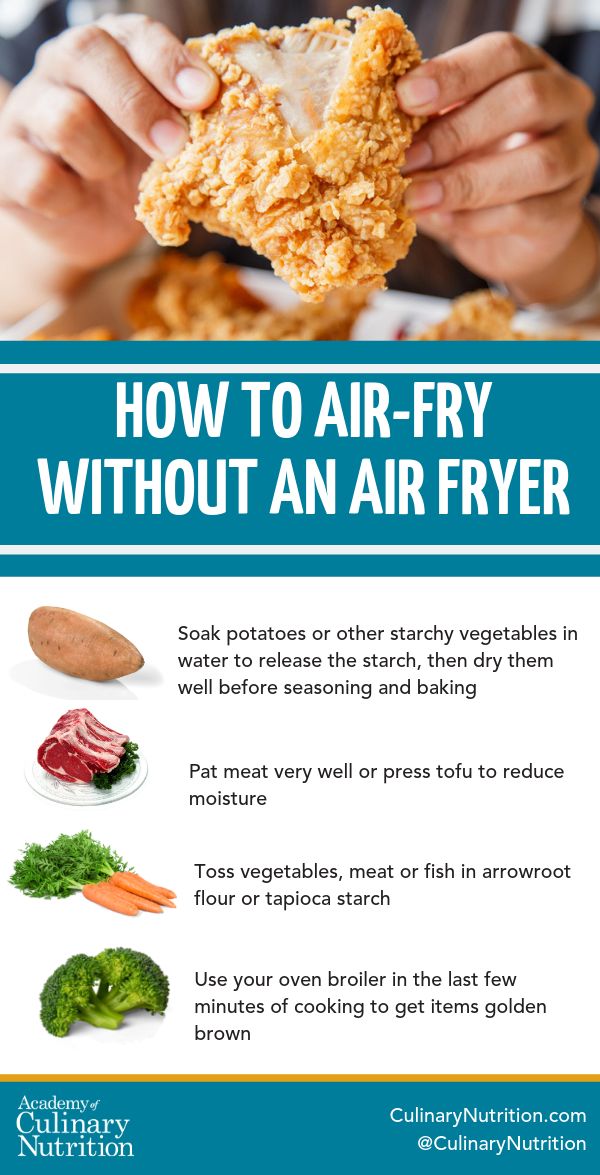
Free Resource Library
Enjoy more than 40 downloadable guides, recipes, and resources.















